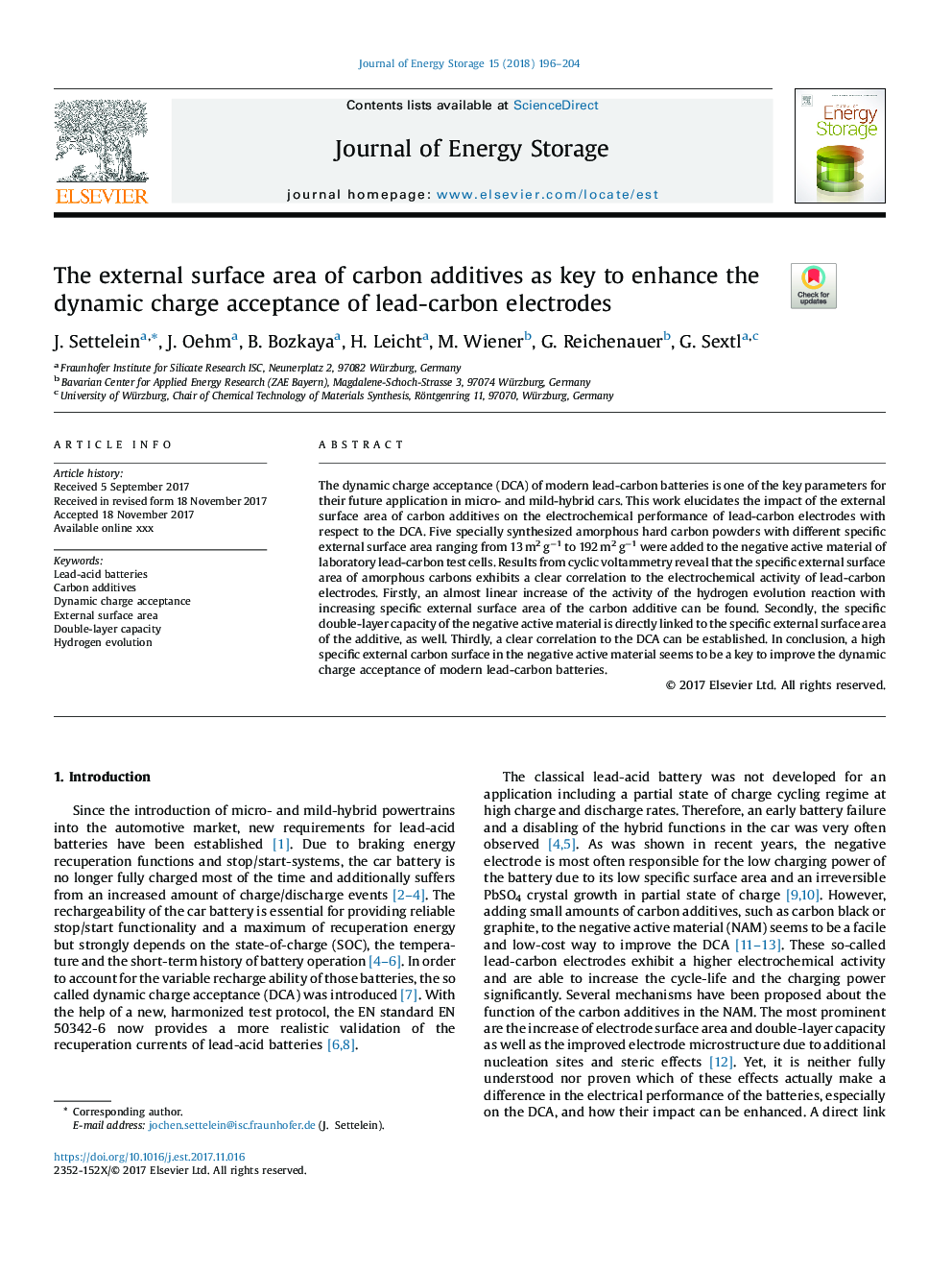| Article ID | Journal | Published Year | Pages | File Type |
|---|---|---|---|---|
| 7540191 | Journal of Energy Storage | 2018 | 9 Pages |
Abstract
The dynamic charge acceptance (DCA) of modern lead-carbon batteries is one of the key parameters for their future application in micro- and mild-hybrid cars. This work elucidates the impact of the external surface area of carbon additives on the electrochemical performance of lead-carbon electrodes with respect to the DCA. Five specially synthesized amorphous hard carbon powders with different specific external surface area ranging from 13Â m2Â gâ1 to 192Â m2Â gâ1 were added to the negative active material of laboratory lead-carbon test cells. Results from cyclic voltammetry reveal that the specific external surface area of amorphous carbons exhibits a clear correlation to the electrochemical activity of lead-carbon electrodes. Firstly, an almost linear increase of the activity of the hydrogen evolution reaction with increasing specific external surface area of the carbon additive can be found. Secondly, the specific double-layer capacity of the negative active material is directly linked to the specific external surface area of the additive, as well. Thirdly, a clear correlation to the DCA can be established. In conclusion, a high specific external carbon surface in the negative active material seems to be a key to improve the dynamic charge acceptance of modern lead-carbon batteries.
Keywords
Related Topics
Physical Sciences and Engineering
Energy
Energy (General)
Authors
J. Settelein, J. Oehm, B. Bozkaya, H. Leicht, M. Wiener, G. Reichenauer, G. Sextl,
